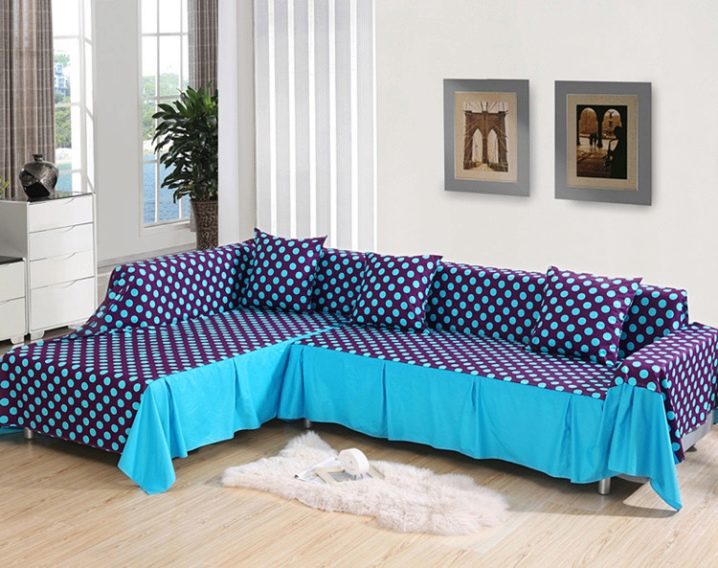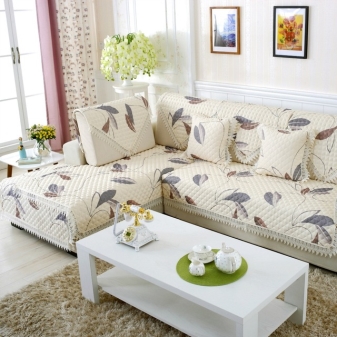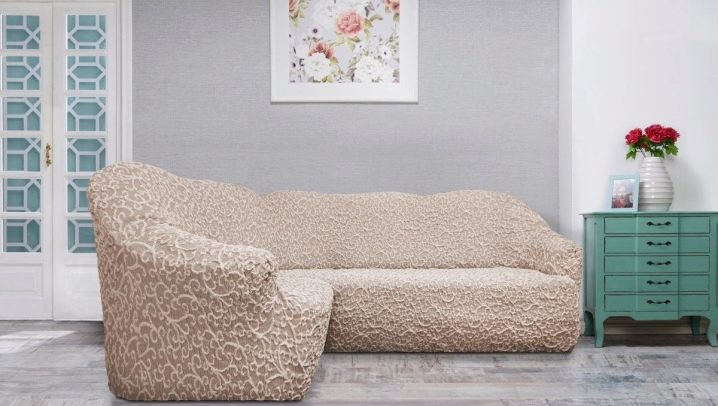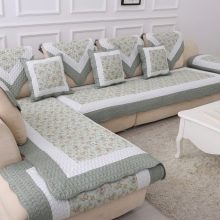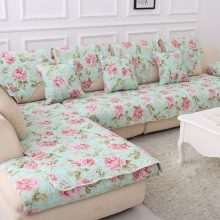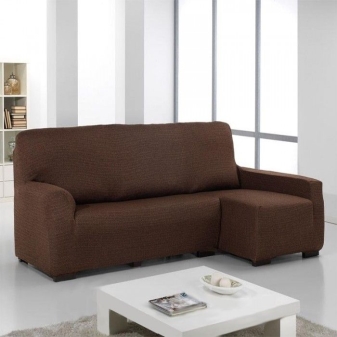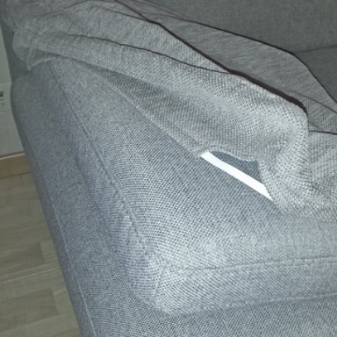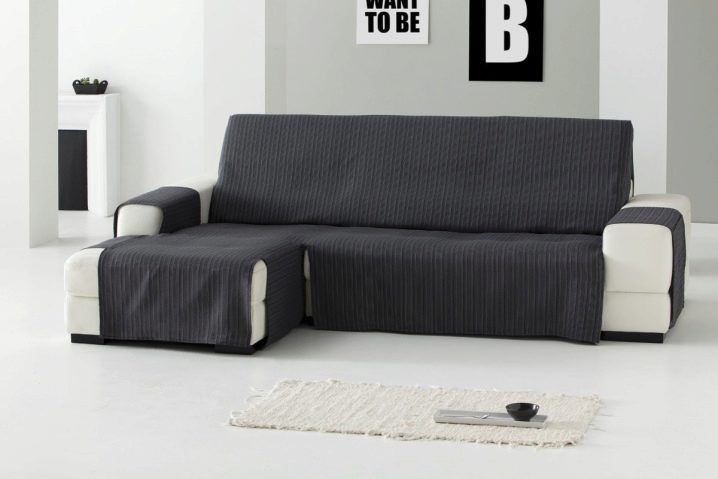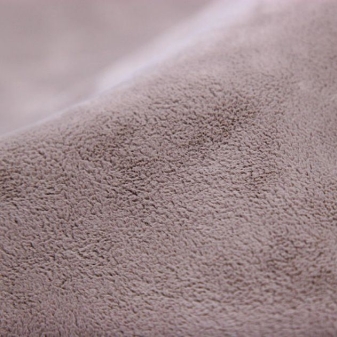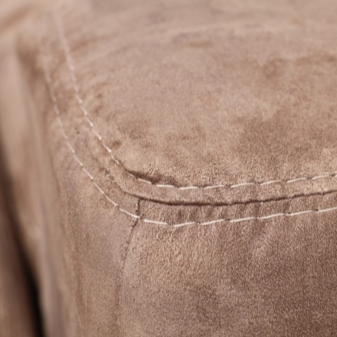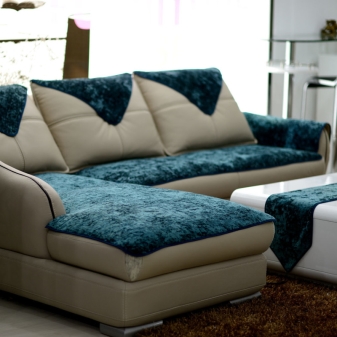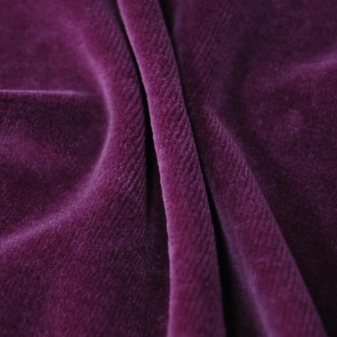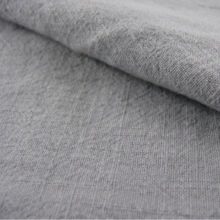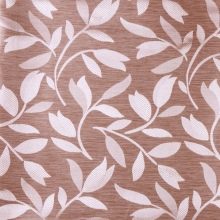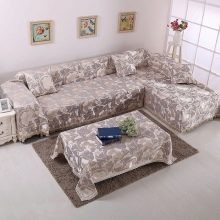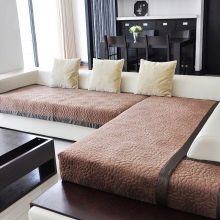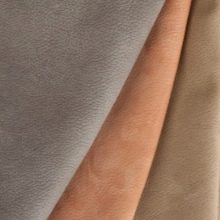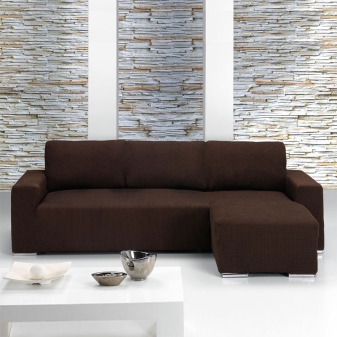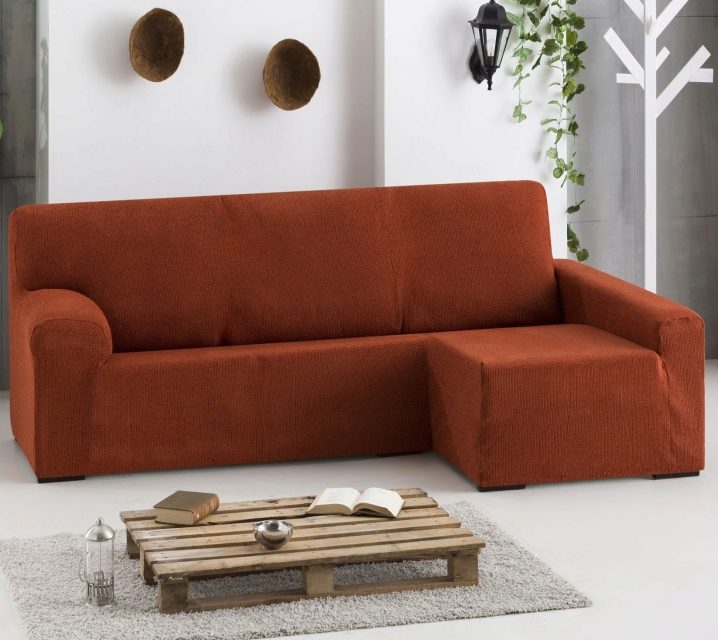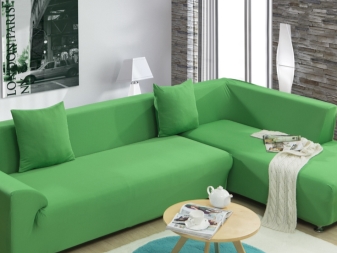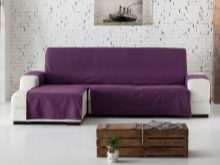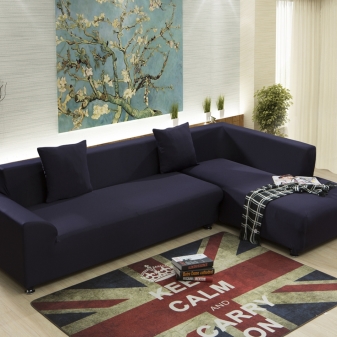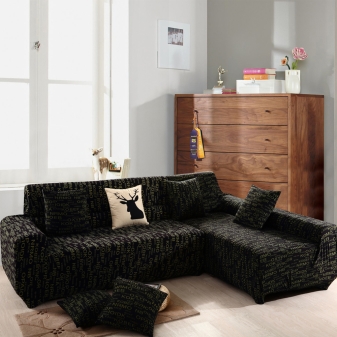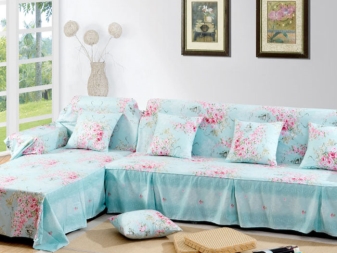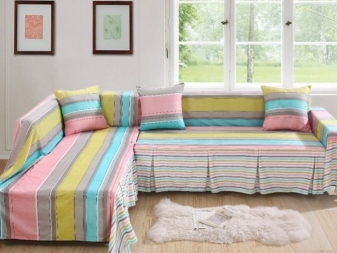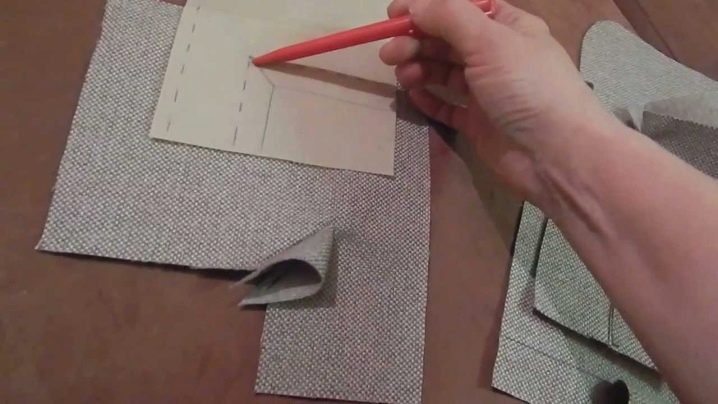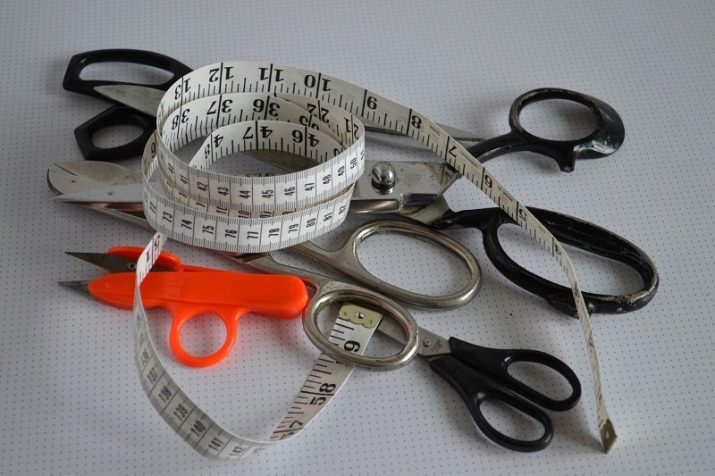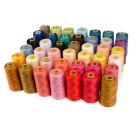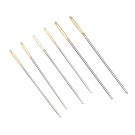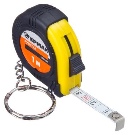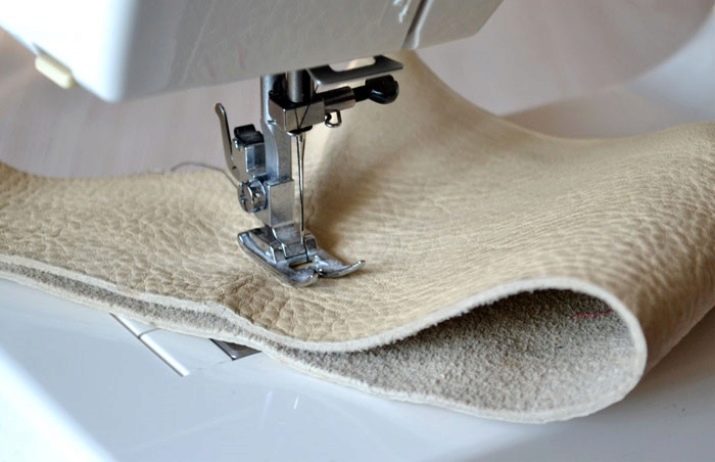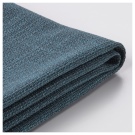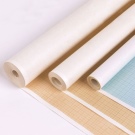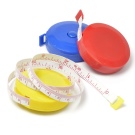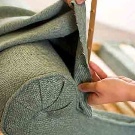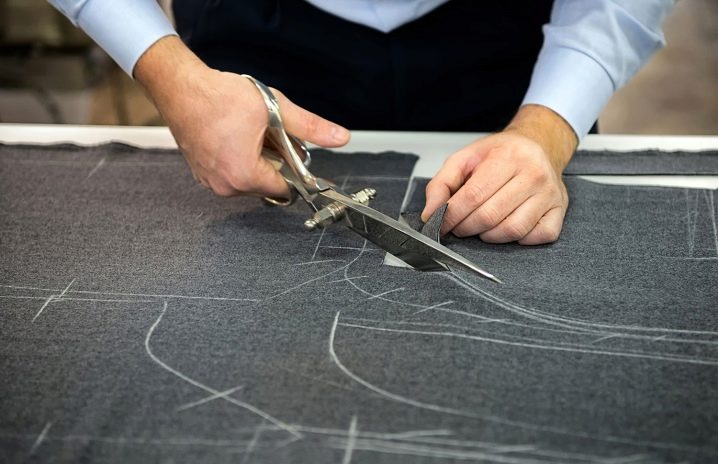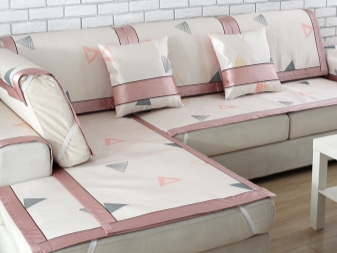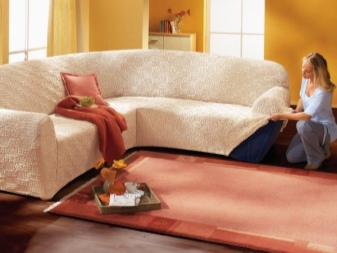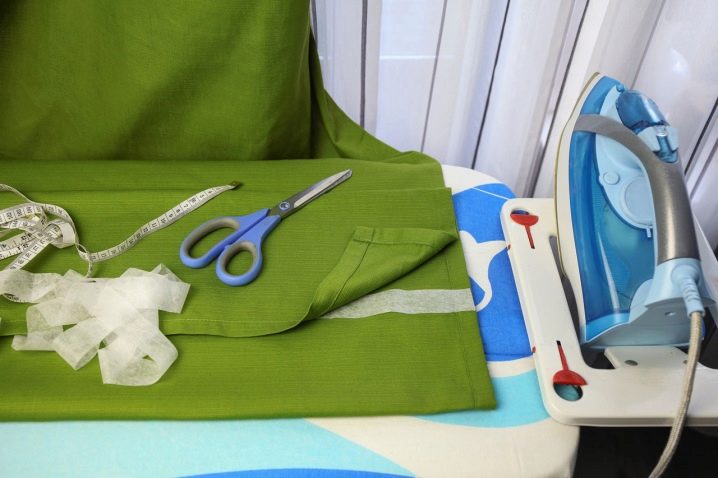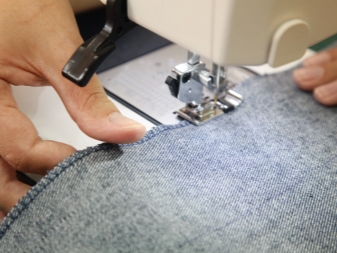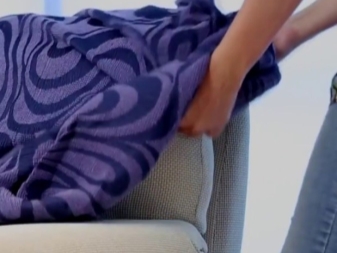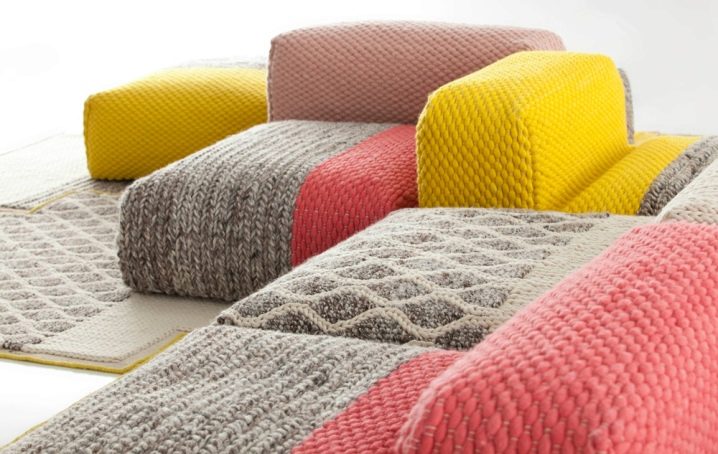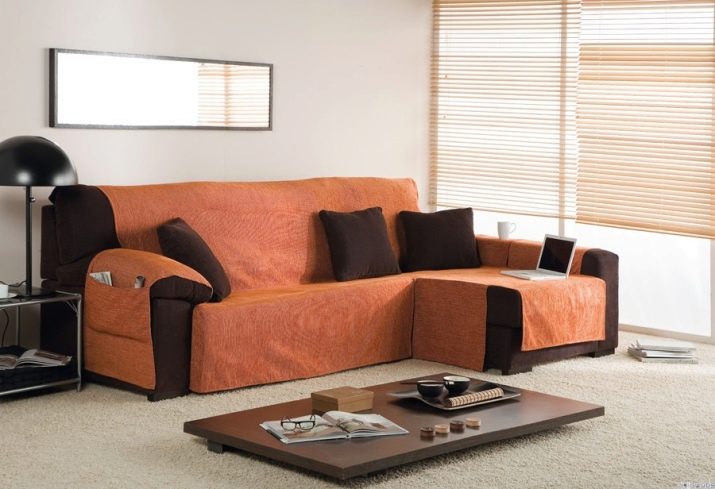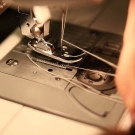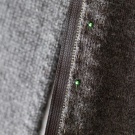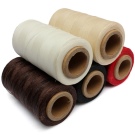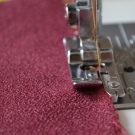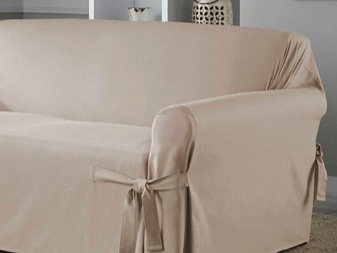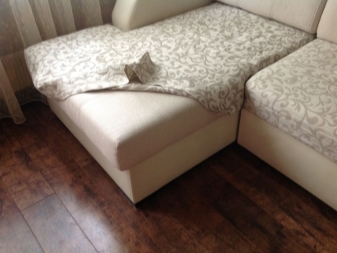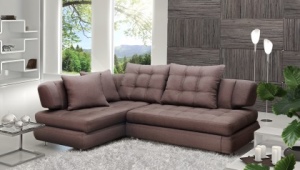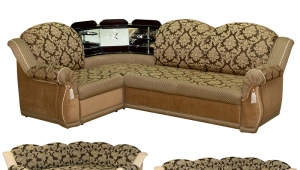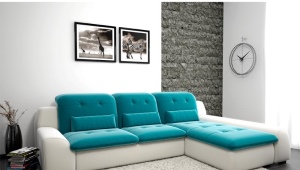Cover for an angular sofa
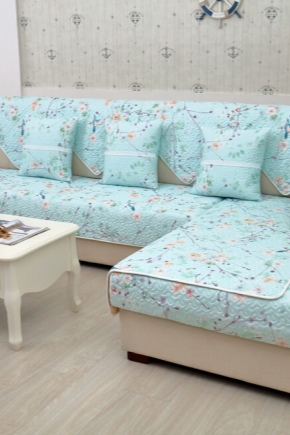
The cover on the corner sofa is an accessory, designed not only to protect the furniture from dirt and damage to the upholstery. The cover can be a good solution to update the situation in the house, if you replace the furniture is not possible. With a great desire and patience, a cover for furniture can be made even with your own hands, which will significantly save you money on new clothes.
It is important to note that the product is put on the sofa, changing only its appearance without changing the design. In addition to the merits, covers for corner sofas have a small drawback: they have to be removed before the sofa is laid out.
Special features
Of course, the cover on the corner sofa must also be matched in color and this is an important, but not the only criterion for choosing. First of all, it is necessary to measure the parameters and keep in mind the design of the furniture.Also to orient in the price range and design solutions will help the goal with which the cover is purchased. For example, models from the same fabrics will be suitable for changing the style of furnishing; to protect the cover of the sofa, it makes sense to purchase a product from other materials. And with a one-time update of the style of the room, several other options will work before an important event.
Range
The range of upholstered furniture covers is presented today as follows. options:
Eurocover
Covers of this type can be covered and protect furniture of any designs, they are convenient to remove and put on. These products are versatile and even suitable for sofas with a shelf or bar. Used for sofas with right or left protrusion.
Capes
This type of covers is not just an ordinary piece of fabric that can be put on a sofa and then corrected endlessly. Capes are also divided into several types:
- sets, which are intended for each individual component of the sofa in the form of bedspreads,
- covers, in shape repeating the geometry of the sofa,
- kits, each element of which closes one part of the sofa.
It is worth noting that the advantage of a set of capes over a one-piece cover is that the first one will probably fit in a washing machine.
On an elastic band
Covers of this type are stretchable products, they must be well straightened before putting on the furniture. Otherwise, such products are very convenient to use, they look extremely aesthetically pleasing and, due to their versatility, they will be suitable for sofas that have a projection both on the left and on the right and in fact are dimensionless.
Materials
After resolving the issue with the most appropriate type of product for the sofa design, you should pay attention to the material from which it is made.
The solution to this issue is to be approached with no less pretentiousness, since poor-quality material significantly shortens the life of the cover, and can ruin the appearance of the furniture. At the same time, one should carefully select the fabric when sewing the product independently. When choosing a material, it is also necessary to determine the functions that the sofa performs. This is necessary because the fabric that is ideal for a child’s room will look less advantageous on a sofa in the living room.
You should not choose too heavy fabrics, because they are extremely difficult to wash, and too light will slide.
So, basic fabrics which are used in the manufacture of covers for corner sofas are:
- Flock. Visually resembles velvet and is suitable if you need to buy a removable cover for a bed or on a sofa in the living room. With external softness, flock is a very durable fabric and is excellent as a material of protective covers for furniture. It consists of natural cotton fibers and synthetic additives in the ratio of 1 to 4 with a high percentage of polyester fibers. The advantages of this material include its resistance to sunlight: it does not burn out in the sun. In the flock, dust mites are very rarely infused. The fabric has a drawback - for some consumers, it can cause allergies.
- Teflon flock. The additional strength of this fabric is given by the addition of Teflon to it at the molecular level. For buyers who have pets, the material will fit perfectly, as the coating is surprisingly resistant to the teeth and claws of animals, it is also extremely difficult to leave a stain on it.
- Velours. Another fabric that visually resembles velvet, but favorably differs from it by its lower price. Velor covers can have a different direction of the pile, which seems to be an insignificant trifle, but in fact significantly affects the appearance of the cover. Pile can be shaped, smooth, impressed. It is worth noting that velor can be made from various types of raw materials, which also sometimes differ in properties.
The undoubted advantage of the material is that it does not accumulate static electricity and does not cause allergies, and stains and dust can be easily washed or dry cleaned. The downside when choosing a material may be its low resistance to mechanical stress and price.
Although velor is significantly inferior to velvet over it, it cannot be considered as cheap fabric either.
- Cotton. It is a natural fabric and this property can be attributed both to its pluses and minuses. The positive side of this quality is that the material is environmentally friendly and amenable to coloring - it is used to make the brightest covers. The disadvantage of this fabric due to its naturalness is a short service life, if the composition does not contain additional synthetic components, and the possibility of shrinkage after washing.Cotton can be an excellent choice for furniture where children sleep or often play.
- Microfiber. Eurocovers for sofas are most often made from this material. This is a modern and durable fabric that will not cause problems to the owners when washing and can last for a very long time. At the moment on the market is a variety of material with the addition of Teflon. A microfiber product with teflon can last many times more than from a regular one, it does not deteriorate from exposure to sunlight and is extremely easy to clean.
- Chenille To the touch, the fabric is soft, like plush, very warm and durable, but at the same time very light due to the presence of acrylic in the composition. It is pleasant to touch the material and it looks very impressive. An important point when choosing a chenille can be that the covers from it look better on new furniture, since they fit it very well and the crushed sections cannot hide. You should definitely check with the seller that the fabric is not glue-based, since such a material is harmful and strongly inferior to others in density.
- Jacquard. This is a strong fabric that has increased resistance to deformation.The fabric includes elastane, synthetic polyester and organic cotton. Furniture covered with a jacquard cover will most advantageously look in a home with classic and traditional interiors. The material is very difficult to break and it is hard to leave a “hook” on it, so it will suit buyers who have pets.
- Eco-leather If there are no pets in the house, but you really want a leather sofa, but the funds do not allow, then this material will be the ideal solution for the fulfillment of this desire. Stretch covers from eco-leather look good on the sofas in the living room. Also, the material is well suited for a cover in a house where there are children, since with it you can quickly wipe away the markers. But in this situation, the best choice would be an anti-vandal type of eco-leather - it is much more resistant to damage and dirt.
- Upholstery nubuck. Pleasant to the touch fabric, which will be enjoyed by respectable customers. Upholstery nubuck looks very solid, but it is quite expensive. If you intend to use the sofa for the living room, it is better to use a kind of teflon-impregnated fabric.You need careful care for the material: daily vacuuming with a vacuum cleaner, stains should be removed with a specialized cleaning agent. Also nubuck can not be rubbed with pressure. To extend its service life, you will need to stock up on a special set of care, which includes a spray bottle, a foaming agent, a special soft cleaning sponge and a rubber brush.
Colors
In addition to the texture of the material, the choice and color of the fabric is very important. If you plan to put the furniture in a bright room, it is better to choose a cover and pastel shades. A room decorated in such colors is perfect for relaxing.
If you need to make the setting more luxurious, a combination of classic contrasting shades such as white and chocolate will help. On large sofas you should not buy fabrics with small patterns, and too bright ornament on the color of the cover will be annoying. Also, if you have to choose from several shades, you should turn to the psychological aspects of working with color, because the same color can have a completely different effect on the psyche, being a few shades lighter or darker.
The selection of the shade of orange should be approached with great care. Experts do not recommend using orange as the main color when finishing a room or for large parts in the room, because it has a stimulating effect on the nervous system. Slightly whitened shades of orange or slightly darker than its pure color will look more advantageous.
All shades of yellow, except for acidic, have a positive effect on the psyche. They contribute to the improvement of mood and visually expand the space, as well as combined with many colors.
Approximate to the pastel shade of green brings not always relevant associations with hospitals and schools, however, has a calming effect on the nervous system and contributes to mental processes. Dark shades of color have a similar effect. The difficulty in using dark green in the elements of the decor of the room lies in the fact that it is very difficult to choose the appropriate colors of furniture.
The most optimal and multifaceted color that can be formally attributed to green is lime. This is a very interesting shade, which includes the properties of the above range, and warm colors.Unlike light green, light green sets up not on passive reflections, but on active knowledge of the surrounding world.
Blue, blue or purple are suitable for the product if the sofa is the only (or almost the only) piece of furniture in the room. And if the blue fabric can still be safely applied, then with an abundance of purple or blue it is worth being careful, as these colors, as a rule, have a depressant effect and contribute to depression.
White, according to experts, is relatively neutral in its effect on the psyche. Its indisputable plus is that a sofa with a cover of this color will be an ideal "base" for further decoration of the room, and the sofa itself. When adding pillows of bright colors, the furniture will be much more pleasing to the eye.
Black and gray, like blue and purple, should be used very sparingly, since the use of fabrics of these shades for accessories or only for sewing a cover can give a room a more stylish and austere look, and can make a room mournful and “oppressive”. The choice of brown color must be approached carefully.
And absolutely You should not use red material for sewing the case, which is not smoothed by softer colors, as red even in comparison with other bright and rich colors has a particularly strong effect on the nervous system.
How to sew your own hands?
Those who are confident that the dexterity of their hands is able to surpass the factory tailoring, first of all you need to solve the issues that the buyer of the finished product faces.
It is necessary to determine the style of the product. His choice will depend not only on the personal aesthetic tastes of the owners, but also on the overall design of the apartment. A cover that covers the entire sofa along with the back and legs will suit a home decorated in a classic or romantic style. In this case, you can sew additional decorations - ruches or bows. If the apartment is decorated in a more restrained style, then the cover can be sewn clearly in the shape of the furniture, and the decorations replaced with functional pockets.
It should be noted that as a cover for a sofa with a shelf or a wooden corner or with a bar, a plaid or a piece of fabric like a cape case would be best, because these elements in a sheathed form will not look too aesthetically pleasing.
After the necessary decisions have been made, you can proceed to the next stage, which is to directly calculate the fabric.
In order to make the measurements correct, it is necessary to divide the sofa into rectangular parts, measure the backs, armrests and seats, and then add up the results: two widths need to be folded with two lengths. For example, if the furniture has parameters of 200 by 160 cm, then 7, 2 m of fabric 150 cm wide will be required. Then it is worth calculating how much the fabric will cost for the measured parameters.
To facilitate your task, you can draw a model of the sofa on a piece of paper and apply all the data to it. When ordering a fabric in its dimensions, it is better to purchase a larger amount of it than a smaller one, because it is always possible to take it in, and you can’t add fabrics to parts less than planned. Therefore, to calculate the consumption of fabric should be added not less than 50, or even 100 cm.
Instruments
So, in order to independently sew the conceived product, you will need to prepare the following tools in advance:
- scissors;
- needles;
- threads;
- meter and chalk tailoring (or marker);
- material;
- pattern paper;
- tailoring meter;
- sewing machine.
Patterns
Having prepared everything you need at hand, you can move on to the next stage - pattern design. First you need to put measurements on the millimeter paper, and after that transfer them to the fabric. The material should be laid out on a flat surface inside out and marked up with soap or a piece of chalk.
It is important to understand that the furniture only on a superficial, inexperienced look has ideal square proportions. In fact, the shape of the corner sofa is much more complicated, even in factory production, each sofa is sheathed separately. It is better to leave large allowances, in case of an error it will be easier to correct. In addition, as a rule, the purpose of tailoring the cover is to update the design, and not the ideal covering of the sofa, respectively, the product can fit the furniture freely.
With decorative elements, you can not only decorate the case and make the product more stylish, but also divert attention from the flaws of the cut. For tailoring ribbons and ribbons, you can use the material is easier than for the case itself, suitable, for example, silk or satin. Mistakes can be covered with self-made pillows that can be stuffed with the remnants of cloth.If there are animals in the house for protection from claws and teeth, you can add a thin foam foam insert.
It is worth considering that bulky one-piece covers sew in a single canvas. First, the product is stretched over the entire sofa (in the case of corner sofas - on one half and on the other separately), then fixed on the armrests. The cover on the sofa without armrests is even easier to sew - you only need to sheathe the main part of the sofa.
It is necessary to strive to sew the pattern as tightly as possible. If dense fabric is used for sewing, then it is necessary to sew it several times and not to use a small stitch. To keep the case on the couch, you can sew a zipper on the invisible side or linen gum.
After all the necessary measurements that were described earlier, it is necessary iron the material through a wet thin cloth. If the selected fabric is wool or cotton, you must first wash it in warm water so that the material will sit down immediately and the product will not become unusable. After all the preparations, the fabric is turned inside out, on top you need to put the drawings and cut them around the contour.Then, departing 2 cm from the main line, spend the second and cut out the necessary part of the case. At the end of all the described manipulations, you can begin to sew the product.
So, basting includes several steps:
• the cloth turn out inside out;
• sew temporary screeds;
• case try on on the corner sofa.
If during fitting the cover came up, then you can grind off the seams. Smoothly bend all edges, sweep them, then stitch on a typewriter. Each seam is better to handle non-woven tape from the inside, so that it is clear and level. Directly stitching is not a long procedure (takes about an hour), but is difficult because the fabric is bulky and dense, so it moves heavily under the needle.
After all the steps, the cover for the corner sofa will be ready and, with the right performance, it will take a long time to please the whole family with its appearance. You can decorate it using frills or skirts, but this is done based on the style of the room where the furniture will be. Competently stitched product will give even the oldest and ugly sofa a second life and protect new furniture.
For very patient housewives there is another option for making a cover for an angular sofa - it can be tied anddo it either in the form of several crochet square motifs, or connect several separate pieces among themselves. According to the previous scenario, it will be necessary to make measurements and pick up strong threads. When choosing a fiber, you need to pay attention to the mark that is made in stores - the density of knitting, having determined which, you can calculate the number of skeins.
Useful tips needlewomen:
- To sweep the pattern, need to use only strong threads.
- You need to make sure in advance that sewing machine can withstand work on the seams. In extreme cases, you can get out of the situation by folding the fabric in half.
- Scribbling should be slow, Medium or large stitch, so as not to alter later many times.
- For ease of use some seams can be zipped and make the parts for the armrest removable.
- If you need a little "pick up" the fabric on the seams, you need to insert a clothesline in them.
- The original design of the corners of the cover will make the product even more attractive visually. You can lower the part of the cover from the armrest and tie it into a large knot, or, in the case of a cover consisting of several parts, replace the hidden zippers with beautiful decorative buttons.It will look good cover with lacing on the armrests, passed through a small brass bushings. Threads and cords can tie up the corners of the bottom.
- In order not to forget about the crease between the seat and the back of the sofa and fix the pattern, you can use a vacuum cleaner tube or a mop shaft. We must not forget about the fold, which is tucked into the sofa, because it will be necessary when landing.
If there is a great desire to sew a cover for the sofa, but there is no experience in sewing, then you should not give up; it is better to start by trying to get a hand on sewing dimensionless chair covers or stools. Such uncomplicated “attempts at writing” will teach the initial skills of manufacturing products and help to avoid elementary mistakes.
Even more options for covers on the corner sofa, see the following video.
